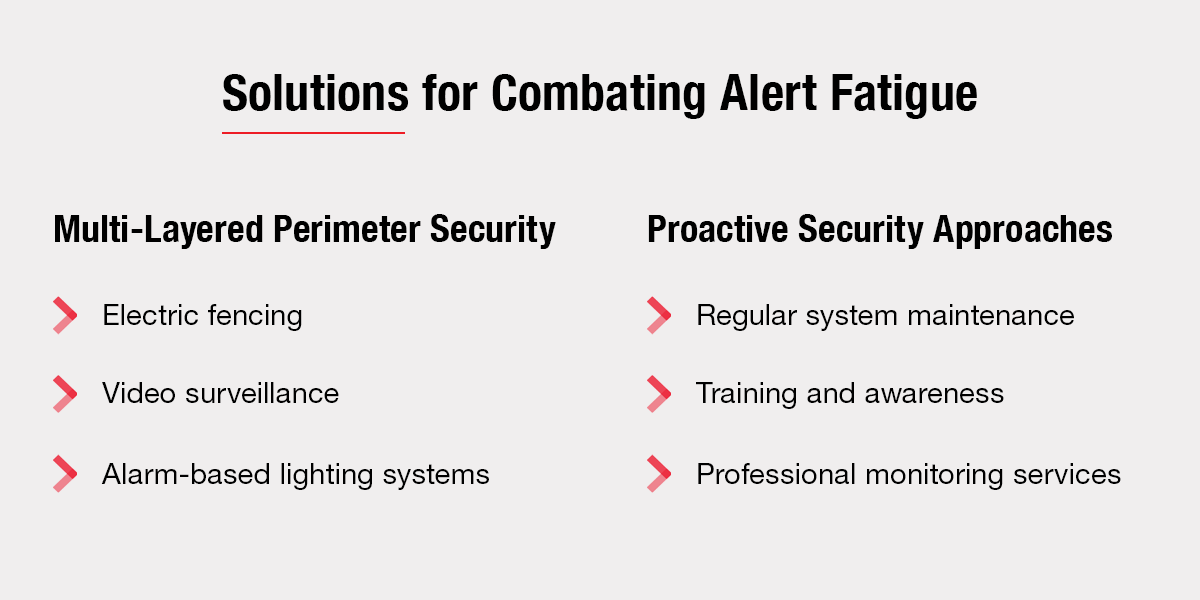Are you constantly bombarded with security alerts that lead to confusion and desensitization among staff? Imagine getting constant notifications on your phone. Over time, you might start ignoring them, even when you know they could be important. If this scenario sounds familiar, alert fatigue may be setting in. However, a single missed alert could result in a significant security breach.
Security alert fatigue occurs when security teams receive too many alerts, leading to reduced effectiveness in responding to real threats. When false alarms happen often enough, staff may overlook critical warnings.
Learn about the dangers of security alert fatigue and solutions to counter it.
What Is Alert Fatigue?
Security alert fatigue is a state of desensitization that occurs when you’re overwhelmed by the volume of alerts you receive. This phenomenon — sometimes called warning fatigue or notification fatigue — is prevalent in environments that rely on monitoring systems. As the number of alerts increases, the ability to respond to notifications diminishes, leading to significant risks for businesses.
The symptoms of alert fatigue among security personnel include:
- Stress
- Burnout
- Decreased job satisfaction
When faced with thousands of alerts daily, many of which are false positives, security teams become apathetic. False positives are alerts that incorrectly indicate a threat, while true positives accurately identify genuine security issues. This fatigue can affect the overall security posture of the organization, as critical alerts may be ignored or overlooked. The constant pressure to monitor and respond to alerts creates a stressful work environment, which affects team morale and productivity.
Security personnel may experience anxiety and exhaustion. When they feel overwhelmed, their ability to effectively manage security operations is compromised.
Several factors contribute to security alert fatigue:
- Poorly configured systems: Inefficient configurations lead to an excessive number of alerts, many of which are false positives.
- Outdated technology: Legacy systems may not effectively filter out irrelevant alerts, increasing the volume of notifications.
- Lack of prioritization: Without a clear system to prioritize alerts based on severity, security teams may treat all alerts as equally important.
The Dangers of Ignoring Security Alert Fatigue
Ignoring the signs of alert fatigue can have dire consequences for businesses, particularly in the case of physical security.
1. Successful Breaches
One of the most pressing dangers of alert fatigue is the heightened risk of successful physical security breaches. If a perimeter security system generates numerous false alarms, you may become desensitized and fail to respond to genuine breaches. This complacency leads to significant vulnerabilities, allowing intruders to exploit weaknesses in the security infrastructure.
2. Financial Impact
Organizations may face breaches that result in costly regulatory fines, legal liabilities, and reputational damage. For example, a successful breach due to missed alerts can lead to the loss of expensive equipment and products. This loss incurs direct costs and damages the organization’s standing in the business community. The financial burden of alert fatigue extends beyond immediate losses — it affects long-term profitability and market position.
3. Operational Inefficiencies
Alert fatigue contributes to operational inefficiencies when valuable resources are wasted on investigating false positives rather than genuine threats. The time spent sifting through alerts can lead to delayed response times, which can be critical in high-stakes situations. Consequences of failing to respond to legitimate alerts include theft, vandalism, or even harm to employees.
4. Employee Morale and Productivity
The psychological toll of alert fatigue can lead to decreased employee morale and productivity. Those who feel overwhelmed by the constant influx of alerts may experience stress and burnout, resulting in higher turnover rates. When employees are fatigued, their job satisfaction diminishes, and they may feel unsupported by management. This can create a cycle of dissatisfaction wherein the remaining staff are burdened with increased workloads, further exacerbating the problem.

Solutions for Combating Alert Fatigue
Combating alert fatigue is essential for maintaining an effective security posture. One way to do this is to prioritize alerts based on their severity and potential impact. However, this tactic needs a system that would allow security teams to focus on high-priority notifications first. To mitigate these issues, businesses need to implement effective solutions to ensure they can focus on what truly matters.
Here are some recommendations and best practices for managing security alerts.
Multi-Layered Perimeter Security
The first step in lowering alert fatigue is through a multi-layered physical security approach incorporating technology designed to respond to genuine threats.
- Electric fencing: Commercial and industrial electric fencing provides a robust first line of defense. Unlike traditional chain link fences, electric fencing delivers a safe but memorable pulsed shock upon contact, triggering an alarm. This feature alerts you of a potential intrusion before criminals can set foot on the property.
- Video surveillance: Coupling electric fencing with remote and mobile monitoring enhances security by allowing you to keep watch over the entire perimeter. It allows for real-time assessment of alerts, ensuring that you can verify security threats while minimizing false alarms.
- Alarm-based lighting systems: Perimeter alarm-based security lights add to the robustness of perimeter security systems. This solution reduces the need for constant monitoring and helps alleviate the stress on security personnel. The fence alarm needs to be triggered for the lighting to turn on, which then increases visibility in that area around the perimeter.
Proactive Security Approaches
With the right security resources in place, you can further prevent alert fatigue and reduce false positives by implementing additional processes, training, and solutions.
- Regular system maintenance: Conducting regular maintenance and assessments of perimeter security systems identifies and resolves issues that lead to false alarms. A healthy system is less likely to contribute to alert fatigue.
- Training and awareness: Provide ongoing training for security personnel on how to manage alerts and recognize genuine threats. This training helps reduce the psychological impact of alert fatigue and improves overall response times.
- Professional monitoring services: Outsourcing video surveillance monitoring to a third-party security operations center alleviates the burden of managing alerts. This approach allows internal teams to focus on core responsibilities while alerts are handled efficiently.
Lower Your Vulnerabilities With Perimeter Security from AMAROK
Too many alerts can cause stress for you and your team. That’s why it’s essential to address the root causes of security alert fatigue to ensure your assets and reputation are adequately protected.
Integrating electric fencing, like The Electric Guard Dog™ Fence from AMAROK, with other security technologies creates cohesive security strategies. Our electric fencing solutions prevent 99% of external theft for customers after installation. Knowing that a robust perimeter security solution is in place will enhance your and your employees’ morale and confidence. We also offer additional security solutions that work well with our electric fencing. Combined, they lead to better monitoring of high-risk areas and reduce the chances of missing critical threats due to alert fatigue.
Connect with our perimeter security professionals or schedule a free threat assessment to identify any potential vulnerabilities on your property.






